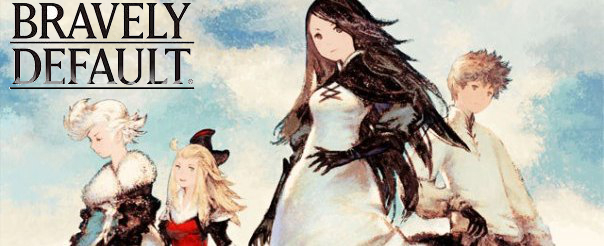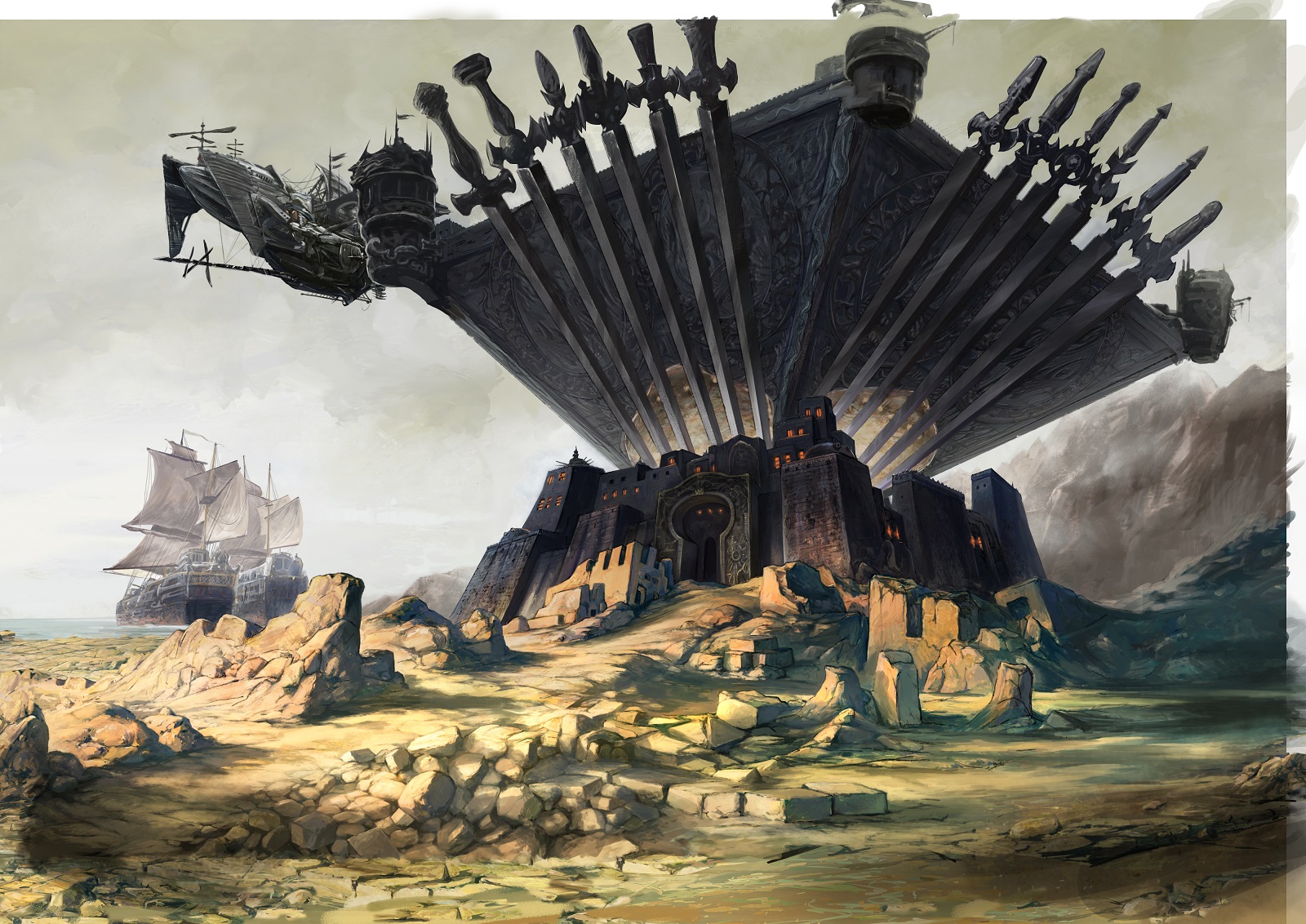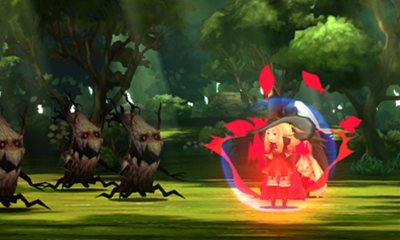
Bravely Default is of the most anticipated JRPG ports in recent memory, and at least, it’s been released here in North America. Not surprisingly, the game was well established in Japan long before the port was being developed in North America. What was surprising is that North America was the last major target market to receive Bravely Default, as it made it to Europe and Australia last year. The fortunate benefit of this, however, is that you get the fully updated version of the game and you won’t have to worry about bugs.
Release Date: February 7th 2014
Overall Rating: T for Teen
Consoles: Nintendo 3DS
Bravely Default was introduced to North America earlier in the year through one of the most extensive demos I’ve ever heard. It wasn’t common to hear people racking up 5 or 6 hours of gameplay on it. David Cerola of the G3 Podcast even admitted that he had racked up at least 20 hours in his estimation, and he was just getting to the end of it. What was helpful here as well for Streetpassers was the fact that you could store up to 20 streetpassed Miis to help you in-game (more on that later.)
Bravely Default is heavily influenced by Final Fantasy games of old, and is for all intents and purposes, considered to be a spinoff of some of the DS titles. You start as Tiz, a poor ol’ farm boy from a mountain town who wakes up a week after his last memory to find out his hometown of Norende, and all of the people in the town have been killed and swallowed up in a giant chasm. He is the last survivor, who then makes it one of his missions in life to restore the town. He wakes up in the town of Caldisla and the game opens there. Soonafter, he meets Wind Vestal Agnès (pronounced On-Yes) Oblige and the main story quest of restoring order to the world begins with you meeting the rest of your party within the next couple hours of the game.
 Here, I should mention that at the beginning of the game, you’re given difficulty options – Choosing “Easy” will allow RPG Novices or those interested in blitzing through the game as fast as possible in the interest of story alone (guilty as charged) a bit of reprieve from the grinding that comes with most RPGs. The game will still be difficult, and you’ll still have to grind some levels out, but you don’t have to pour as much time, or strategy into your moves, and can instead concentrate on things like the main quest and the combat system. This isn’t as easy as I’ve made it out to be, however. You still have to play and bring your characters up to respectable levels to be able to deal with dungeon and boss battles properly. I learned this the hard way when I walked into the Ruins of Centro Keep having demolished everything before me previously and getting absolutely decimated from my lack of proper planning and leveling beforehand. Those ruins, by the way, are about 90 minutes into the game, so I was forced to learn my lesson quickly.
Here, I should mention that at the beginning of the game, you’re given difficulty options – Choosing “Easy” will allow RPG Novices or those interested in blitzing through the game as fast as possible in the interest of story alone (guilty as charged) a bit of reprieve from the grinding that comes with most RPGs. The game will still be difficult, and you’ll still have to grind some levels out, but you don’t have to pour as much time, or strategy into your moves, and can instead concentrate on things like the main quest and the combat system. This isn’t as easy as I’ve made it out to be, however. You still have to play and bring your characters up to respectable levels to be able to deal with dungeon and boss battles properly. I learned this the hard way when I walked into the Ruins of Centro Keep having demolished everything before me previously and getting absolutely decimated from my lack of proper planning and leveling beforehand. Those ruins, by the way, are about 90 minutes into the game, so I was forced to learn my lesson quickly.
The combat system is your traditional turn-based game with a twist. In fact, numerous twists. First, you can choose between “Brave” and “Default” along with standard combat attacks and/abilities. Default simply forfeits your attack in lieu of shielding. Your enemy’s attack will be less powerful (it may still inflict damage,) and you will also bank one battle point to be able to attack twice next turn. Brave allows you to use up to 3 extra turns (4 turns total) in one go. There are benefits and consequences to this. The consequence is for however many turns you use in advance, you are unable to attack for that many turns in succession once you’ve completed your attack sequence. The benefit, however, is that it can help you speed through those low level battles much faster. If your opponent only has, say, 700 hit points, and your attacks do 250 HP damage each, you can simply attack up front and end the battle sooner. This will also get your post-fight bonuses, which come in handy for the purpose of leveling up your job levels. You can customize your gaming experience too and use sliders in the configuration menu to choose how often you encounter enemies. You can set them really high so you end up in a lot of random battles, or you can set them completely off if you want to roam free and do nothing but boss fights. I guess it goes without saying that this is both a benefit and consequence. It’s a benefit for those that want to power grind, but a huge setback for those who don’t like grinding at all. Without being forced to play a few of those additional battles here and there, you’ll never get enough gold or XP to survive the more skilled battles.
As for those job types I mentioned earlier, they’re nothing new to long-time Final Fantasy gamers. In fact, Final Fantasy V gamers know it with a lot of familiarity. For those unfamiliar to job types, it’s a system in which you can create a specialist character. If you want somebody to be your party’s healer, you give them that job caste and have them level that up. If you want somebody skilled in hand to hand combat, same thing. Job types are given within Bravely Default via Asterisks, which you obtain throughout the game. You’ll obtain the first two (Monk and White Mage) within the first hour of the game and progress to receiving more as time goes on. Each even come with their own specialized outfit. Or, if you don’t wish to specialize in anything in particular, you can remain a default freelancer, whose skills average out across all weapons and abilities. In all, skills range from S (where you’re deemed a specialist in that discipline) to E. Unlike some RPGs where it really doesn’t play in as well, and you can simply specialize and level as you please, you’ll see immediate effect when you switch jobs, so plan wisely and grind plenty to soak up those job points in battle to level up. Perhaps the worst thing about grinding in an RPG is the amount of time it takes to do the menial tasks of selecting the same moves in the same sequences in the same style of fights because you’re doing it in a region where you know the same enemies will pop up. Bravely Default makes that a thing of the past. Not only can you auto-cache and play the same moves from your last sequence of actions, but you can speed your battles up 4x with the push of a button. Add in the “Brave” ability to do up to 4 turns worth of moves at once, and your 3 or 4 minute battle will be over in a matter of seconds. Slight word of warning though: The lazy man’s grind I’ve described above will net you less XP if you’re auto-playing your battles than when you’d be manually selecting moves yourself (which I guess is fair considering you’re not really doing a whole lot outside of walking around) so play wisely.
For those unfamiliar to job types, it’s a system in which you can create a specialist character. If you want somebody to be your party’s healer, you give them that job caste and have them level that up. If you want somebody skilled in hand to hand combat, same thing. Job types are given within Bravely Default via Asterisks, which you obtain throughout the game. You’ll obtain the first two (Monk and White Mage) within the first hour of the game and progress to receiving more as time goes on. Each even come with their own specialized outfit. Or, if you don’t wish to specialize in anything in particular, you can remain a default freelancer, whose skills average out across all weapons and abilities. In all, skills range from S (where you’re deemed a specialist in that discipline) to E. Unlike some RPGs where it really doesn’t play in as well, and you can simply specialize and level as you please, you’ll see immediate effect when you switch jobs, so plan wisely and grind plenty to soak up those job points in battle to level up. Perhaps the worst thing about grinding in an RPG is the amount of time it takes to do the menial tasks of selecting the same moves in the same sequences in the same style of fights because you’re doing it in a region where you know the same enemies will pop up. Bravely Default makes that a thing of the past. Not only can you auto-cache and play the same moves from your last sequence of actions, but you can speed your battles up 4x with the push of a button. Add in the “Brave” ability to do up to 4 turns worth of moves at once, and your 3 or 4 minute battle will be over in a matter of seconds. Slight word of warning though: The lazy man’s grind I’ve described above will net you less XP if you’re auto-playing your battles than when you’d be manually selecting moves yourself (which I guess is fair considering you’re not really doing a whole lot outside of walking around) so play wisely.
There are a couple battle enhancements to speak of here too. There’s the Streetpass feature I mentioned earlier, in which players share their specific character builds and you can summon them in battle. The more you summon them, the stronger your affect level grows. To add even MORE to the battle experience, there’s a feature called Abilink, which allows you to borrow your friends’ job levels in battle. This is limited, however. You can’t keep drawing from the well as many times as you like. You’re limited to just 4 ability shares.
 The battle system is great, but what about the rest of the game? The graphics in this game are amongst the most interesting I’ve ever seen. Many of the backgrounds and secondary effects are hand drawn and feel almost impressionist at times. These are blended with more 3D effects in the foregrounds, battles and character shadings. The blend results in a very homely cartoony feel, reminiscent of a lot of early 90s style Anime films.
The battle system is great, but what about the rest of the game? The graphics in this game are amongst the most interesting I’ve ever seen. Many of the backgrounds and secondary effects are hand drawn and feel almost impressionist at times. These are blended with more 3D effects in the foregrounds, battles and character shadings. The blend results in a very homely cartoony feel, reminiscent of a lot of early 90s style Anime films.
The only thing I really wasn’t a fan of it is really just a minor fact but I notice these weird things. A lot of the Voice Acting really doesn’t suit the character personalities. The voice of Agnès is fairly spot on, but Tiz and Ringabel, for example, don’t really do it for me.
I’m probably in the minority on this one as well, but I wasn’t really a big fan of the world map view. I suspect it’s just because I’m a creature of habit and enjoy seeing everything drawn to scale on my world map. Granted, the way they do it here is much more helpful for navigation overall – It’s just weird to see your character on the map as being half the size of the mountains, and then being unable to just walk over them.
My colleague Philippe Michaud on the French Best Buy blog “Branche-Toi” sent me an email after he had gotten into the game telling me that it was one of his favorite RPGs since the Super Nintendo era, and many of my hardcore RPG playing friends concurred. I’m not sure that I would go that far with my personal list of favourites. In fact, as far as my 3DS RPG playing preferences go, I liked the battle STYLE and gameplay functionalities of Legend of Zelda: Link Between Worlds better, though I think Bravely Default is the better pure RPG. This is the game you want if you yearn for a serious, much more traditional thinker’s style RPG. To that note, I’d go so far as to say this is the best offering so far for the 3DS to long-time Final Fantasy and Square Enix gamers. This is one of those titles where you could easily see yourself resetting the game clock in terms of hours played. I remember visiting a friend when I was younger, and his Final Fantasy III game clock read 97 hours, which completely blew me away. If you attempt to play to 100% as much as possible, the story mode will easily take you 40-45 hours on any difficulty, though you can scale things down on the easier difficulty, and push the 25-30 hour mode. You’d be missing a lot of optional elements, however, and it would still leave you with rebuilding Norende, which could take a LOT longer without the assistance of Streetpass. Much like Animal Crossing a few months ago, I’d recommend just taking your 3DS with you wherever you go for the next few weeks and Streetpass as many people as you can. This will help you gain people to help you rebuild the town of Norende in-game, based on the types of skills they offer you. Granted, you can do this without the help of people and by importing data through the Save Game adventurer, but where’s the fun in that?

Like Ni No Kuni at this time last year, it’s easy to throw out the “RPG of the Year” term since it’s less than 60 days into this year, but there might not be a lot of competition this year. It’s looking like Final Fantasy XV and Kingdom Hearts III won’t be around anytime this year, and so that takes out two main competitors. Child of Light looks phenomenal, however, as does Dragon Age: Inquisition. One thing is for sure, however: Bravely Default is the perfect way for an RPG fan to open up 2014. There is never a dull moment here, and with so much to offer, and so many different ways to enjoy the game, Bravely Default is from a single track, linear title.
Final Ratings
Gameplay: 4.5 / 5
Graphics: 5 / 5
Sound: 4.5 / 5
Controls: 5 / 5
Lasting Appeal/Replayability: 5 / 5
Overall Rating: 4.8 / 5
Bravely Default is available now, and has definitely been worth the wait. You can get it for the Nintendo 3DS now at your local Best Buy or online at BestBuy.ca.
What were your thoughts of Bravely Default? If you’re a longtime RPG gamer across all platforms, where does this rank on your list of favourites?



